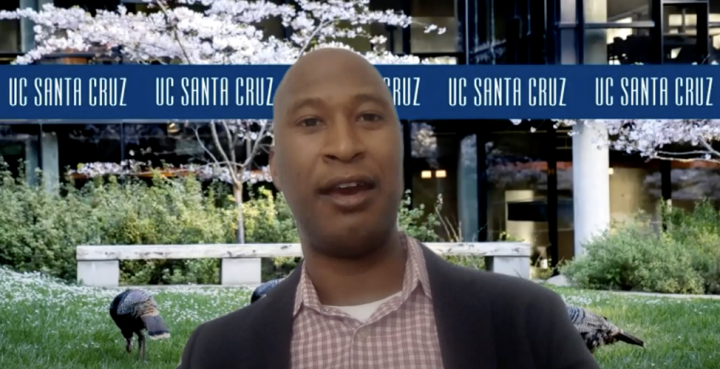More than 245 people tuned in last week to the second Conversations with Extraordinary Leaders event to hear Van Williams share his insights and experiences as an IT leader who is also a person of color.
Van serves as the Vice President and CIO, University of California. He was previously at UC Santa Cruz.
Sponsored by Stanford People of Color in Technology (POC-IT) and moderated by Stanford CIO Steve Gallagher, attendees of this all-virtual event represented IT communities at both Stanford and UC Santa Cruz, as well as other UC schools and beyond.
Through a facilitated conversation and Q&A, Van shared his career journey, lessons learned along the way, thoughts about diversity and inclusion, and the traits he has found to be most important in his leadership approach.
Designing diverse and inclusive work environments
According to Van, designing for diversity and inclusivity within organizations requires planning. Being mindful of who in your organization is writing blogs, who you are sending out to speak, who is managing your social media, and whether goals and values are listed on your website can help increase diversity over time.
Van outlined eight actions organizations can take to address racial injustice in the workplace:
- Encourage mentorships
- Provide sponsorships
- Offer training
- Provide advocacy
- Serve as models who provide inspiration
- Partner with shared interest groups
- Focus on recruitment and retention
- Create opportunities for women and people of color
Community outreach opportunities that have improved diversity, equity and inclusion (DEI) at UC Santa Cruz have included collaborations with underrepresented students through internships. At Stanford, IDEAL IT (IDEAL stands for Inclusion, Diversity, Equity and Access in a Learning community) programs have been successful through measured impact. The Year Up Internship Program has helped Stanford cultivate a more diverse workplace.
“A diverse and inclusive workplace is simply a better place to work and has better outcomes for clients. It’s very simple,” Steve said.
Van agreed. He noted that a more distributed and hybrid workplace environment can benefit organizations because it offers the ability to tap into people of color from rural locations, which helps accelerate and launch careers. The hope is for more people across the country to build skills due to increased access to resources, making them more competitive and uplifting the workplace environment.
Leading as a person of color
Van’s transition from New York University (NYU), a natural melting pot of different people, to UC Santa Cruz, a smaller coastal area, required him to become more comfortable in his own skin and to advocate more strongly for diversity from a position of leadership.
When asked by Steve what it means to be a person of color in the ranks of IT leadership, Van acknowledged the pressures of modeling behaviors and being a change agent for his staff of 250. Van also noted that he has benefitted during his own career from connections with other inclusive leaders.
“While here [at UC Santa Cruz], I’ve had the privilege and opportunity to work for a dean who is a Black Jamaican, who has served as a model and inspiration for me, and really helped me set my sights higher in terms of what I could do,” said Van.
Van’s focus on being an exemplary role model extends beyond the workplace. In his home, he has posted a series of values that he lives by: curiosity, courage, compassion, goals, grit, and gratitude. Van says these are the traits that he admires in people who he views as successful and he works to continually instill these attributes in his three young sons.


